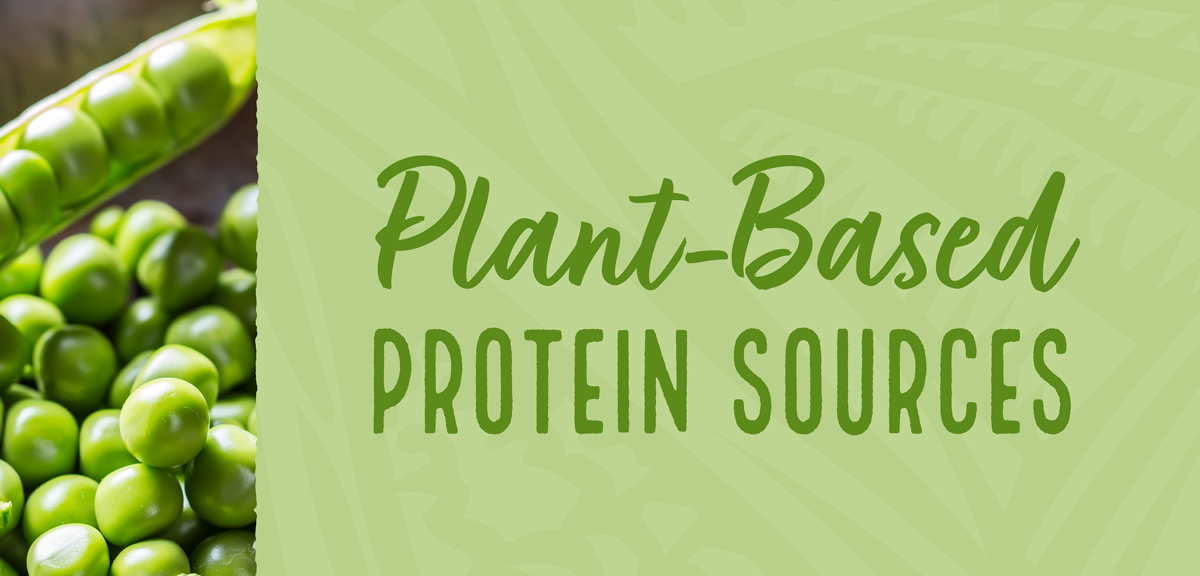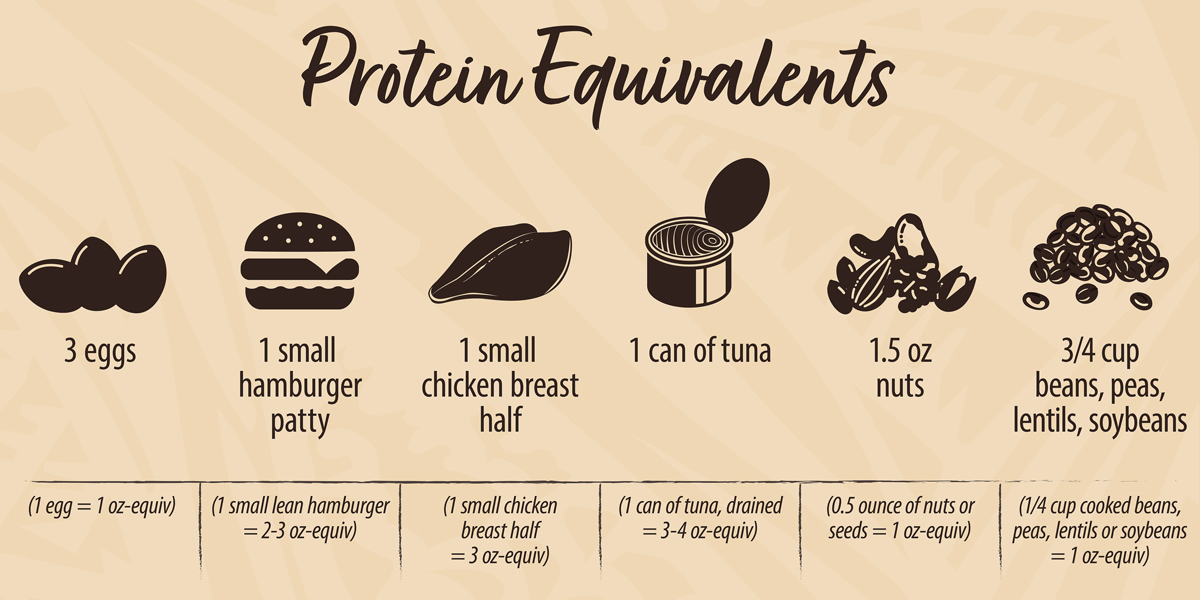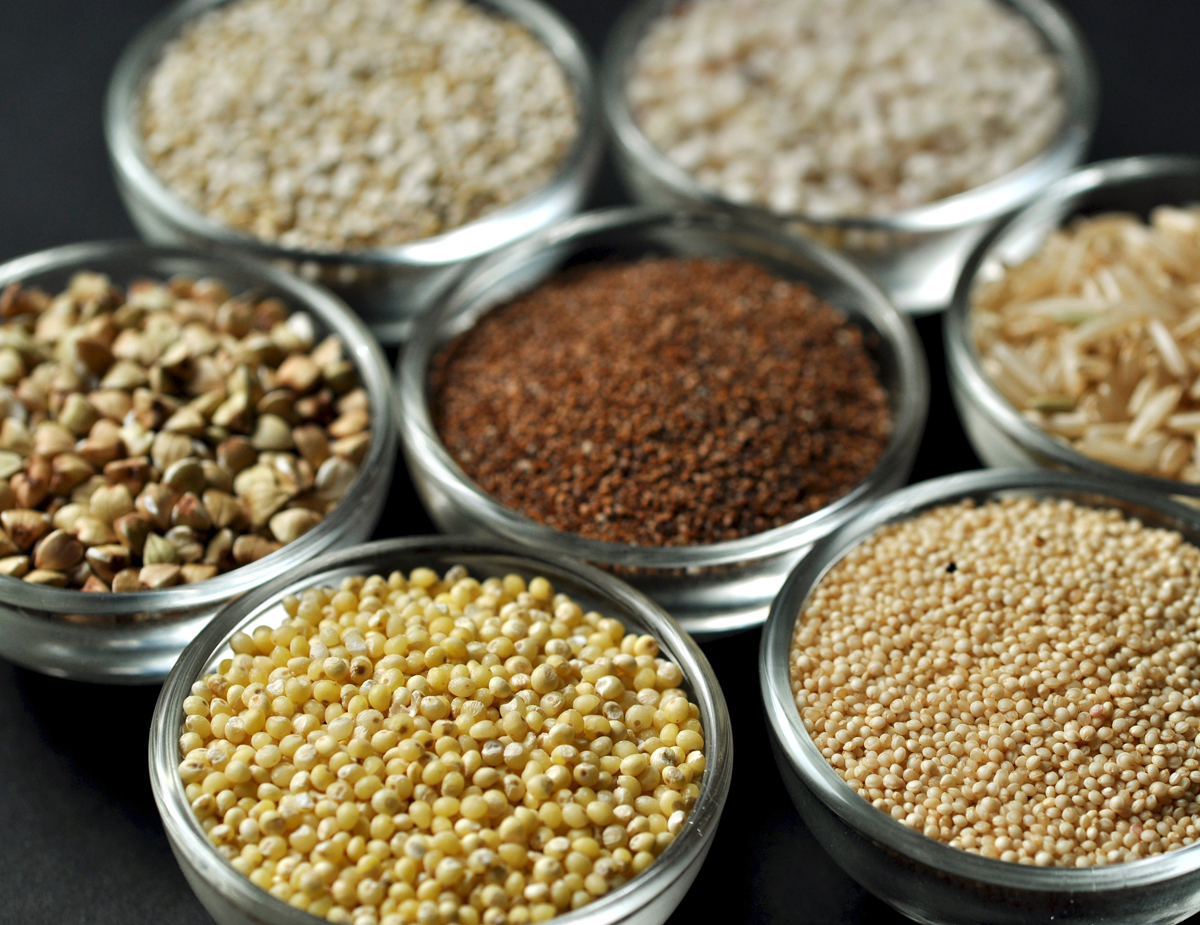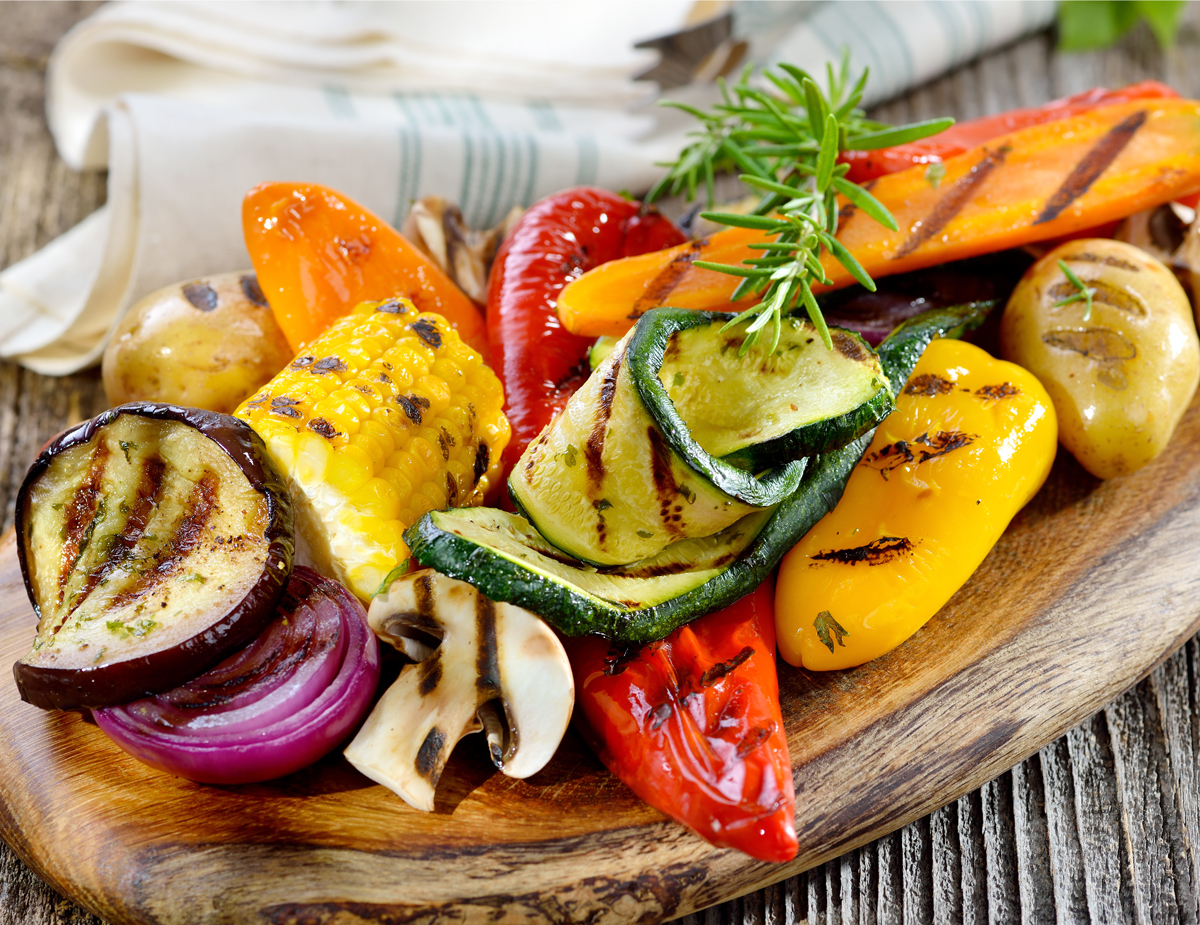
We all know protein is an important part of our diet, but when we think of protein-rich foods, most of us are likely to think of beef, chicken and other meats. Fortunately, there are a lot of other options. You could even go without meat all-together and still enjoy a protein-rich diet.
How much protein do I need?
For starters, let’s consider how much protein the average adult needs on a daily basis and why it’s good for the body. Protein plays many vital roles, including helping us to build muscle and fight infections. The USDA says that, in general, we need about 6 ounce-equivalents of protein each day. Men may need a little more, women a little less, and most people need less as they age. Those who lead a more active lifestyle also need more protein in their diets.
How much is an ounce-equivalent of protein?
An egg and a tablespoon of peanut butter each have an ounce-equivalent of protein. Let’s compare a few protein-rich foods:

What are good sources of protein?
In addition to all of the above, other good sources of protein include milk, cheese and yogurt. Six ounces of Greek yogurt, for example, has 17 grams of protein, or about as much as three eggs.
Many vegetables have substantial amounts of protein, including soybeans, peas, potatoes, broccoli, asparagus, corn and Brussels sprouts. Many grains also offer a healthy protein punch, including quinoa, brown rice, oats and barley.
For those considering a vegetarian lifestyle, the USDA recommends a diet that is higher in soy products, as well as beans, peas, lentils, nuts, seeds and whole grains.
Top 10 protein sources for vegetarians
Even if you already get enough protein in your diet — as do most Americans — you’d be better off getting more of that protein from lower calorie, plant-based foods. According to the nonprofit Vegetarian Resource Group, these are 10 of the top sources of protein from plant-based foods:
| Food | Serving Size | Grams of Protein |
| Tempeh | 1 cup | 34 |
| Soybeans | 1 cup | 31 |
| Lentils | 1 cup | 18 |
| Black beans | 1 cup | 15 |
| Veggie burger | 1 patty | 15 |
| Tofu | 4 ounces | 12 |
| Bagel | 1 | 11 |
| Peas | 1 cup | 9 |
| Quinoa | 1 cup | 8 |
| Peanut butter | 2 Tbsp | 8 |
Consider more seafood, nuts, seeds and soy
The USDA suggests that people vary their protein routine to ensure enough vitamins and minerals from multiple food sources. While the vast majority of Americans meet or exceed recommendations for meats, poultry and eggs, almost 90% don’t eat enough seafood. And more than half of the U.S. population falls short of meeting the recommended daily intake of nuts, seeds and soy products.
Need some ideas to mix it up?
Try bean-based vegetarian chili or lentil soup, or add nuts to salads. If you don’t subscribe to a vegetarian lifestyle, consider protein-rich fish or seafood a couple of times a week to benefit from healthy fatty acids.
Visit our recipe section for many different ways to enjoy seafood and vegetarian meals that are rich in protein.
Though most people can get enough protein from a nutritious and varied diet, the use of powdered protein supplements is an option if consumed in moderation. Visit the Whole Health section of your Market to find protein powders and bars.
Whatever your lifestyle or food choices, our friendly and knowledgeable teammates are here to help you find what you need to incorporate healthy proteins into your diet and to help you achieve your nutrition and lifestyle goals.
Explore More Topics
Related Posts
- Seven Gluten-Free Grains and How to Enjoy Them
Eating gluten-free doesn’t mean giving up on all grains. In fact, there are only a few grains you need to avoid.
- Grill summer vegetables, fruits for easy seasonal flavor
With so much of summer’s bounty making its way from the farms to your grocery basket this time of year, finding new ways to enjoy it is key.
- From Bakon to JUST Eggs, plant-based breakfast foods are the real deal
Vegans who adhere to a plant-based lifestyle leave meat products off their plates, but thanks to an expansion in innovative, plant-based foods to meet the growing demand, the makings for a fully plant-based breakfast, including bacon-like “meat” and eggy-tasting “eggs,” is perfectly possible.



